How often do you get a chance to wander through a citadel where Greek heros or mythical gods have strutted their stuff ?
We were in the Peloponnese, a region of southern Greece that since ancient times has played a major role in Greek history. When the Minoan civilization declined after 1450 BC, the focus of power in the ancient Aegean world moved from Crete to the hill-fortress palaces of Mycenae and Tiryns in the Peloponnese. Between 15th and 12th century BC, Mycenae was one of the major centers of Greek civilization, a military stronghold which dominated the eastern Mediterranean.
Interesting as it is purely from a historical perspective, what makes it more interesting is that Mycenae and its contemporaneous cities in the peninsula are the setting of much of ancient Greek literature and myth. In the epic poems, the Iliad and the Odyssey, Homer celebrates Mycenae as the seat of King Agamemnon, who led the Greeks in the Trojan War. He refers to the city as ‘Mycenae, Rich in Gold’. Until the 19th century, these poems were regarded as no more than legends, beautiful and gripping, but legends nevertheless.
But in the 1870s, the amateur archaeologist Heinrich Schliemann (who also uncovered Troy), using landmarks from the text of Homer's Illiad, began excavating at a still visible site near Argos and discovered a citadel, royal tombs, the well-preserved remains of a royal palace and a warren of houses. A royal cemetery with six shaft graves were found within the citadel uncovering magnificent gold treasures including a well-preserved gold death mask. The archeological evidence at this site seemed to correspond with the vivid picture of the towns and societies mythologized by Homer supporting Schliemann's claim that this was the fabled Mycenae Acropolis.
So excited was Schliemann on uncovering the gold treasures and the mask, he sent a telegram to the Greek king stating, ‘I have gazed upon the face of Agamemnon’. Subsequent scientific analysis dates the death mask as belonging to an unknown king who had died some 300 years before Agamemnon. But the objects of opulence and antiquity that were excavated and the extraordinary material wealth deposited in the shaft graves attests to a powerful elite society that flourished here. But is this really Mycenae of the Homer's legend? Did King Agamemnon really exist ? Was this really his palace? In Mycenae myth and history are so intertwined, and the genealogical line so complex, that no one really knows.
But the archeological site of Mycenae, perched high up between two even higher mountains on the beautiful and verdant Argolis plain, is a fascinating place to visit. We took a bus from Nafplio to the small modern town of Mycenae, which is a couple of kilometers downhill from the archeological site. This being low season, there was no public transport directly to the site and getting to it involved a minor workout.
The ancient city of Mycenae consisted of a fortified citadel and surrounding settlement. Due to the sheer size of the citadel walls (13m high and 5m thick on average), formed by stone blocks weighing several tons in places, the ancient Greeks believed they must have been built by a Cyclops, one of the giants described in the Odyssey!
Entry to the citadel is through the dramatic Lion Gate, a portal of massive stone blocks on which are carved two large lionesses. The lion motif is believed to have been the insignia of the Royal House of Atreus and these well-preserved lions are reputedly the oldest surviving friezes in the western world.
The ruins are extensive and inside is a well marked path that takes you through various excavated areas including the palace and the all important Grave Circle A where Schliemann found the famous gold treasures in the shaft graves.
Besides shaft graves, there are also a number of well preserved Tholos tombs, shaped like a beehive. (After the 15th century BC, the Myceneans moved on from shaft graves to this new form of burial). The best preserved of these, named the Treasury of Atreus, or tomb of Agamemnon is just outside the main archeological area. It has a 40m-long passage that leads to an immense open chamber which is a self-supporting dome. It is built with stone blocks that get steadily smaller as the structure tapers to its central point. The dome architecture is proof of the technological skills of the Myceneans at the height of their empire. An intriguing aspect of its construction is how they managed to place a massive stone lintel at the top of the entrance. It measures 8m long, 5m wide and is estimated to weigh as much as 120 tonnes!
Within the main site are a few more tholos, some fancifully named after kings and queens from legends but with no evidence to support their purported provenance.
Archaeological evidence indicates that the palaces of the Mycenaean kingdoms declined some time around 1200 BC and the palace itself was set ablaze in about 1100 BC. But the real mystery behind the cause of the destruction is unsolved.
There is a small but well-organized museum on site that houses many of the finds from the excavation including pottery, weaponry, jewelry and some rare samples of Linear B writing (proto-Greek) on tablets. However they display only copies of the most valuable and fascinating gold treasures found on this site, the originals being safely tucked away at the National Archaeological Museum in Athens and which we had seen just a couple of days earlier.
Google Maps Link
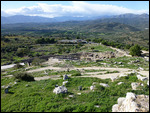
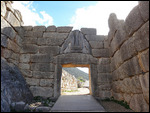
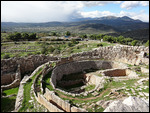

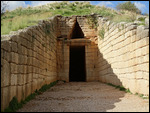
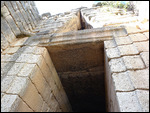
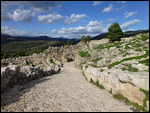
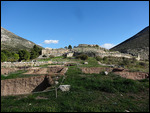
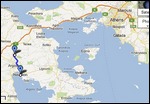
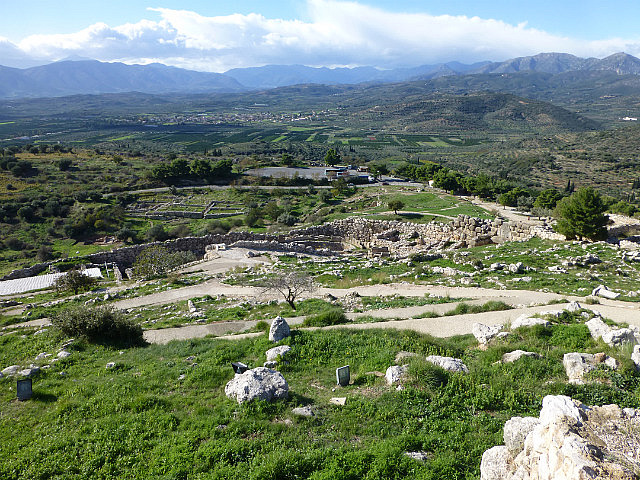
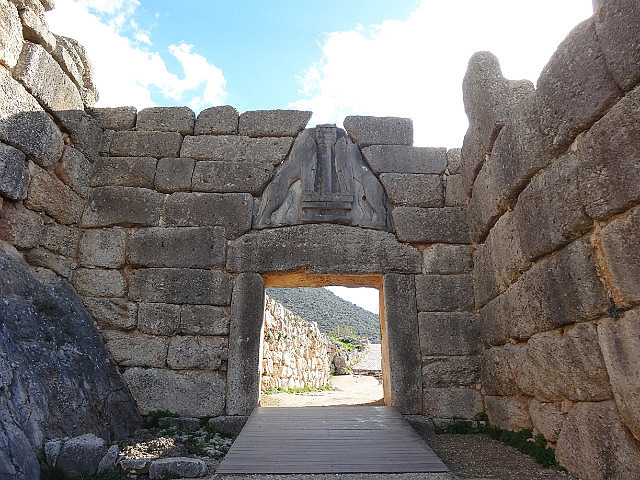

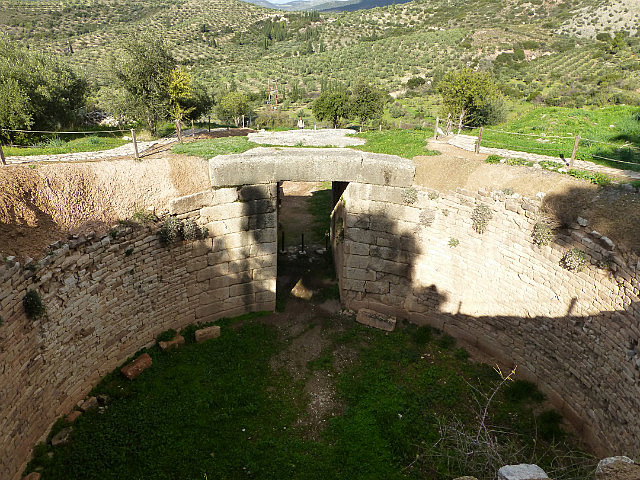


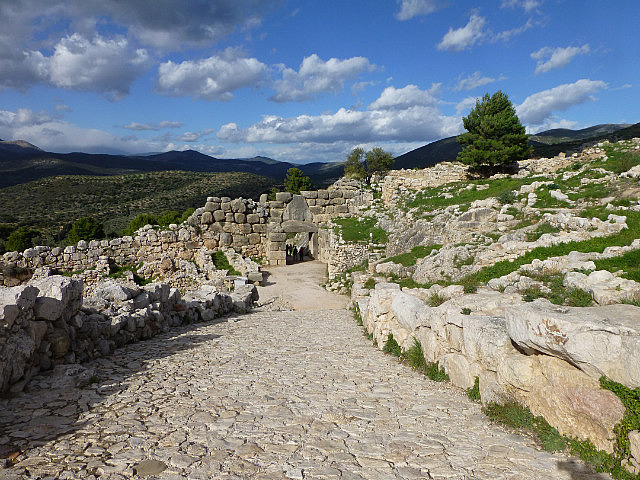

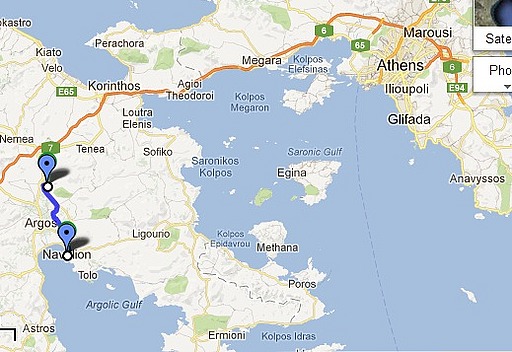
Comments